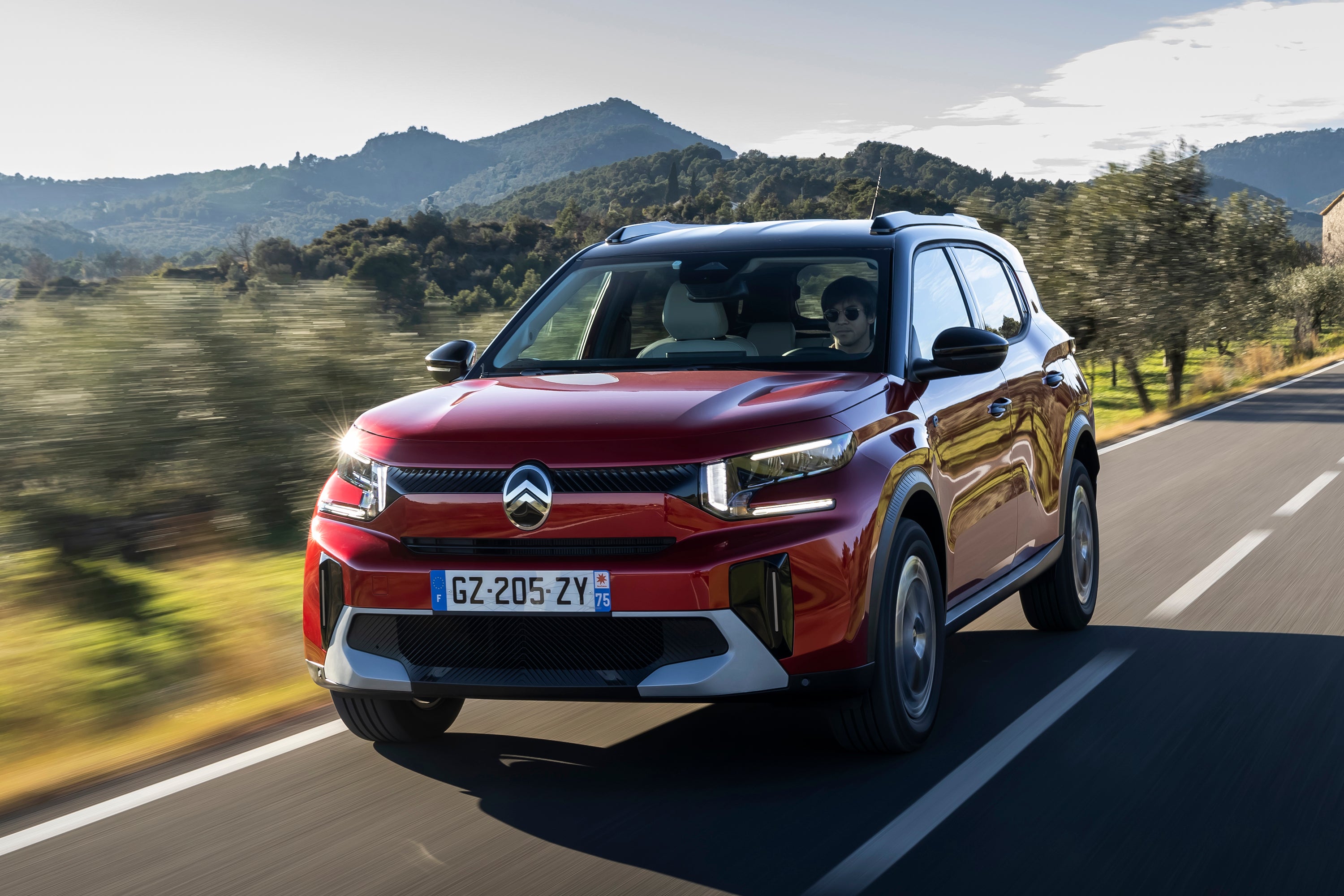Citroen C3 Aircross Review 2025: Price, specs & boot space
Written by Matt Robinson
Quick overview
Pros
- Looks a lot smarter than the old one
- Seven-seater practicality in a small package
- There's an e-C3 Aircross electric version now
Cons
- Seven-seater version loses a lot of boot space
- Doesn't ride as smoothly as some Citroen models
- Not the most refined
Verdict: Is the Citroen C3 Aircross a good car?
"The Citroen C3 Aircross has taken on a chunky new aesthetic while gaining extra practicality in the form of a seven-seat option and more choice thanks to the new electric e-C3 Aircross. It's still very affordable, but compromises have inevitably been made, particularly in terms of refinement."
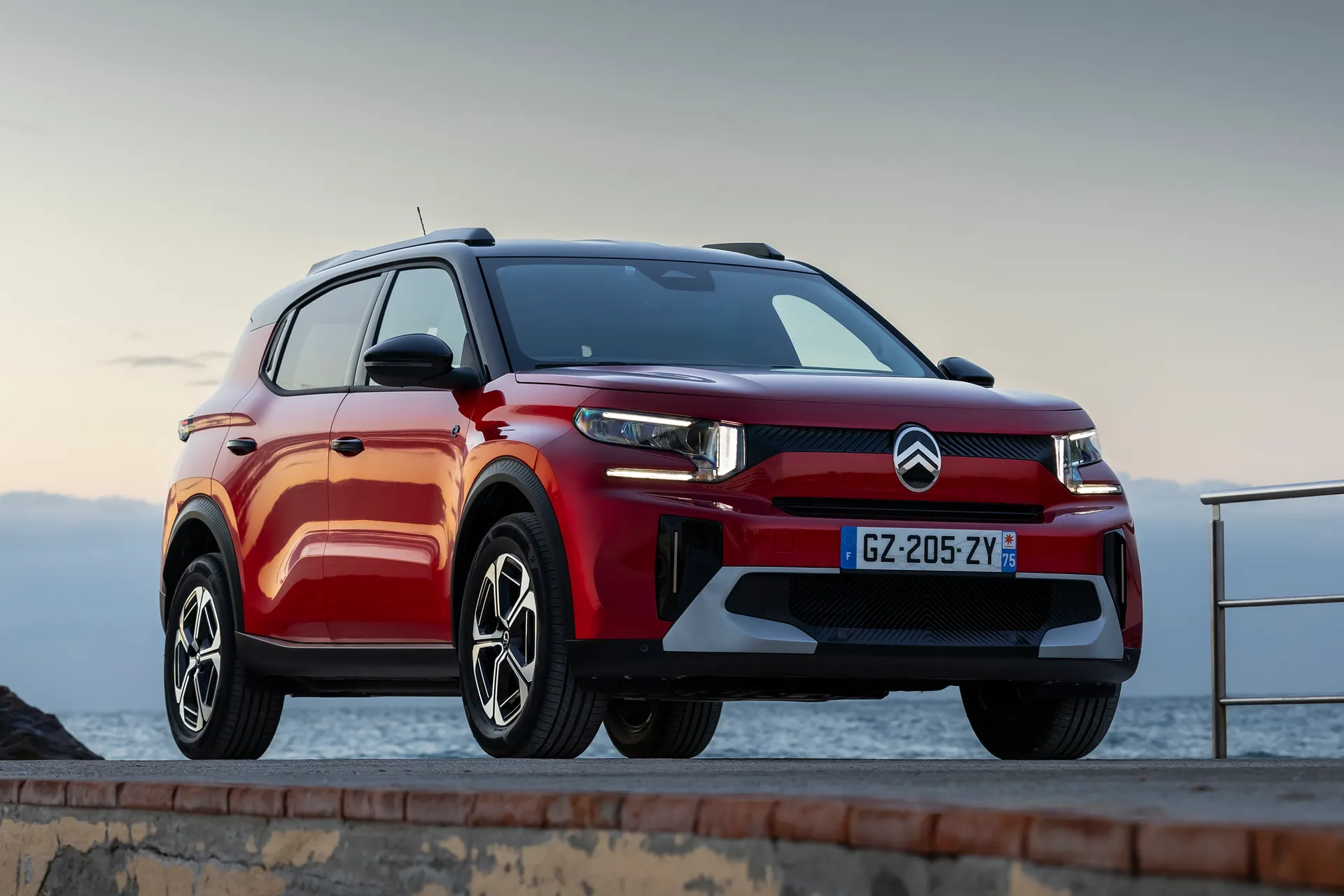
The quirky but loveable Citroen C3 Aircross introduced in 2017 is making way for an all-new model. The 2025 car looks radically different from the outgoing one, but it's not the styling that's the most attention-grabbing change - instead, it's the adoption of a seven-seater layout.
Finally, it looks as though the Dacia Jogger has some competition when it comes to cheap cars that can seat seven. And for many, the C3 Aircross' small SUV shape will make it more appealing than the frumpy Dacia.
As if the overhauled styling and extra row of seats weren't enough, Citroen is also introducing the first all-electric e-C3 Aircross, giving customers more choice. It's worth noting you'll only be able to have the compact electric SUV as a five-seater, and there'll only be a smaller battery pack available from launch.
The interior isn't the poshest in terms of some of the materials and finishings, but it's a stylish design, and there are lots of neat little 'Easter eggs' that might just brighten up your day.
What's most impressive about all of this is the C3 Aircross has remained very affordable, starting at around £20,000. Even the e-C3 isn't that expensive. Something has to give, though, and that's refinement - it's not the quietest car inside. We were also hoping the suspension was a bit softer - it's certainly not bad in this regard, but it doesn't have that 'magic carpet' ride some of Citroen's other cars manage.
Looking for a used car for sale? We've got 100s of Citroen Approved Used Cars for Sale for you to choose from, including a wide range of Citroen C3 Aircross models for sale.
Is the Citroen C3 Aircross right for you?
If you want to pack a lot of practicality into a relatively compact footprint and for an extremely reasonable price, the Citroen C3 Aircross is well worth a look. If the seven seats are of use to you, there's not much else that can compete at the expected price tag, but if you don't really need the third row, it's worth noting this is a hotly contested area of the market. The value for money here is probably enough to make it stand out, though.
What’s the best Citroen C3 Aircross model/engine to choose?
The main choice from launch will be between a petrol and electric version of the Citroen C3 Aircross. Which is "the best" is going to come down to the kind of driving you're going to do because
we're not anticipating a great deal of price difference between the 1.2-litre, 100PS petrol and the electric C3 Aircross.
Our preference would probably be the electric one. Citroen's 1.2-litre, three-cylinder engine isn't the most refined, so the EV is going to be the more relaxing thing to drive. Only the smaller battery pack is available initially, though, so if you're likely to be covering great distances, the EV won't be ideal. It's the same story if charging at home will be difficult or impossible for you.
What other cars are similar to the Citroen C3 Aircross?
As Citroen is part of the expansive Stellantis Group of brands, there's another car sitting on the same Smart Car (not to be confused with that Smart car) platform - the new Vauxhall Frontera. It too can be specced with seven seats, and given the prolific nature of platform sharing within Stellantis, it wouldn't be a surprise to see other brands like Peugeot producing other mechanically similar alternatives to the C3 Aircross. The new Fiat Grande Panda also uses the Smart Car architecture, but it's smaller than the C3 Aircross and only available with five seats.
Away from Stellantis, the expected low price of entry for the C3 Aircross combined with its ability to seat seven pitches it against the Dacia Jogger. Until now, it's been unchallenged when it comes to the transportation of seven humans for not a lot of money.
It's a very different body style to the C3, though, being more of an estate crossover. Closer to the shape of the C3 Aircross is the Mercedes-Benz GLB, which also seats seven, but being a car from a premium brand, it's considerably more expensive than the Citroen, with the cheapest weighing in at over £37k.
Ignoring the seven-seater angle for a moment, there are plenty of compact SUV rivals for the C3 Aircross, including the Skoda Kamiq and Volkswagen T-Cross.
Comfort and design: Citroen C3 Aircross interior
"The New Citroen C3 Aircross cabin design brings things bang up to date, with a minimalistic design and an interesting choice of materials."
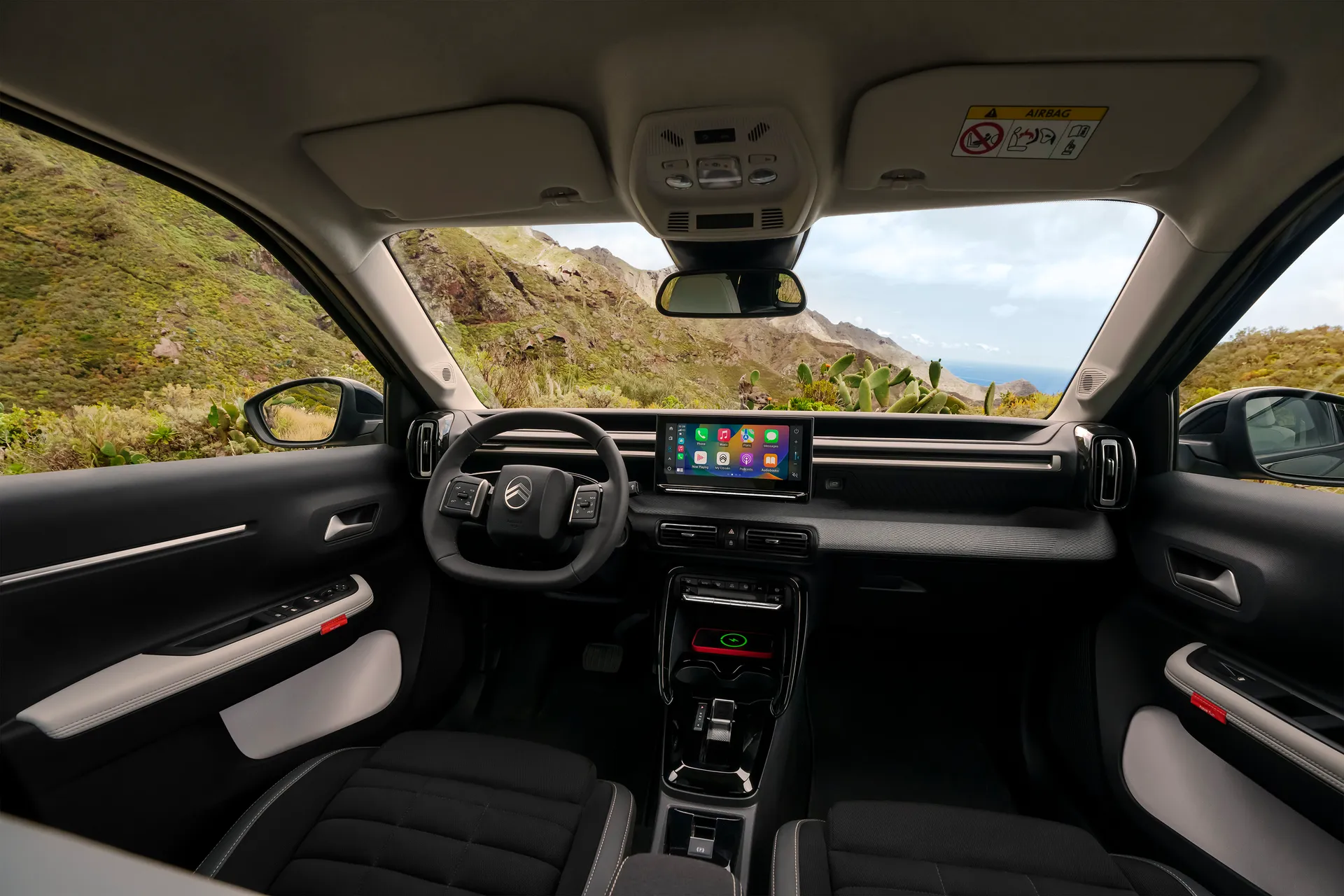
The outgoing Citroen C3 Aircross never had a particularly amazing cabin, and towards the end of its life, it was looking positively dated. But in the new C3 Aircross, Vive la difference!
The fresh, minimalistic design features horizontal lines stretching across the dashboard, framed by vertical vents at either end. The new two-spoke steering wheel might not be to everyone's tastes, but it's certainly not boring to look at.
You also get some interesting materials, including a fabric covering for the lower portion of the dashboard. Apparently, this is 'Sofa Design', Citroen says, explaining "this area is covered in a special fabric and embellished at both ends with new zones of warm light, adding to the feeling of well-being". Right.
On the less-good front, that minimalism has arguably been taken a little too far. There's a distinct lack of physical buttons and dials, and as is sadly the case for a lot of Stellantis products, many of the climate functions have been relegated to the central touchscreen. At least there are shortcut buttons for some things like the front and rear windscreen demist functions.
Ensuring the C3 Aircross has its own sense of character in spite of all its shared componentry, there are some neat little 'Easter eggs', including silhouettes of the Eiffel Tower, Notre Dame cathedral and the Gallic rooster (the national symbol of France) hidden in the heating elements of the rear three-quarter windows. We're less sure about the little labels on each door pull that say things like 'be cool', though.
Quality and finish
This is a mixed bag overall for the C3 Aircross. There are plenty of nicer bits and pieces, particularly the fabric covering for the dashboard, but that's offset by an abundance of cheap-looking plastics, particularly what's used for the door cars. It's all put together just fine, though, with perfectly acceptable build quality. And that's not something you've always been able to say about Citroen products.
Infotainment: Touchscreen, USB, nav and stereo in the Citroen C3 Aircross
All Citroen C3 Aircross derivatives get a 10.25-inch touchscreen infotainment system which is angled towards the driver, although only Max-trimmed versions get navigation with it. In any case, many drivers will prefer to use the wireless Apple CarPlay and Android Auto connectivity and beam their preferred mapping app onto the display.
There are two USB-C sockets in the front row, another pair in the second row, and a single socket in the third row on seven-seater versions. On Max-trimmed cars, you don't need to plug your device in at all if it has wireless charging capability, as there's a 15W charging mat in the centre console.
Space and practicality: Citroen C3 Aircross boot space
Exactly how much clobber you can chuck in the C3 Aircross boot depends on whether or not you've specced the seven-seater. If you have, and all seats are up, you'll have a mere 40 litres to play with. That's not a huge surprise - squeezing a third row into such a compact car is going to lead to compromises. With the third row folded away, there's 330 litres of capacity.
This pales in comparison to the five-seat model, which can take up to 460 litres of luggage in its boot. The second row is also 65mm further back, meaning it'll be noticeably roomier back there than in the seven-seater. Drop the second row, and there's 1,600 litres of load space to play with. Plenty for an Ikea shopping spree.
Knee and headroom in the second row are decent, while the third row of seats is more useful than you might expect. Given the car's compact footprint, we were thinking the rearmost seats would only be of use for kids, but shorter adults should be able to fit. I even managed to get my six-foot frame into one of the third-row seats and still had a little bit of head and knee room to spare, although there wasn't anywhere for my feet to go...
Handling and ride quality: What is the Citroen C3 Aircross like to drive?
"The Citroen C3 Aircross behaves tidily on country roads, but we'd have happily had a bit more body roll in return for some additional comfort."
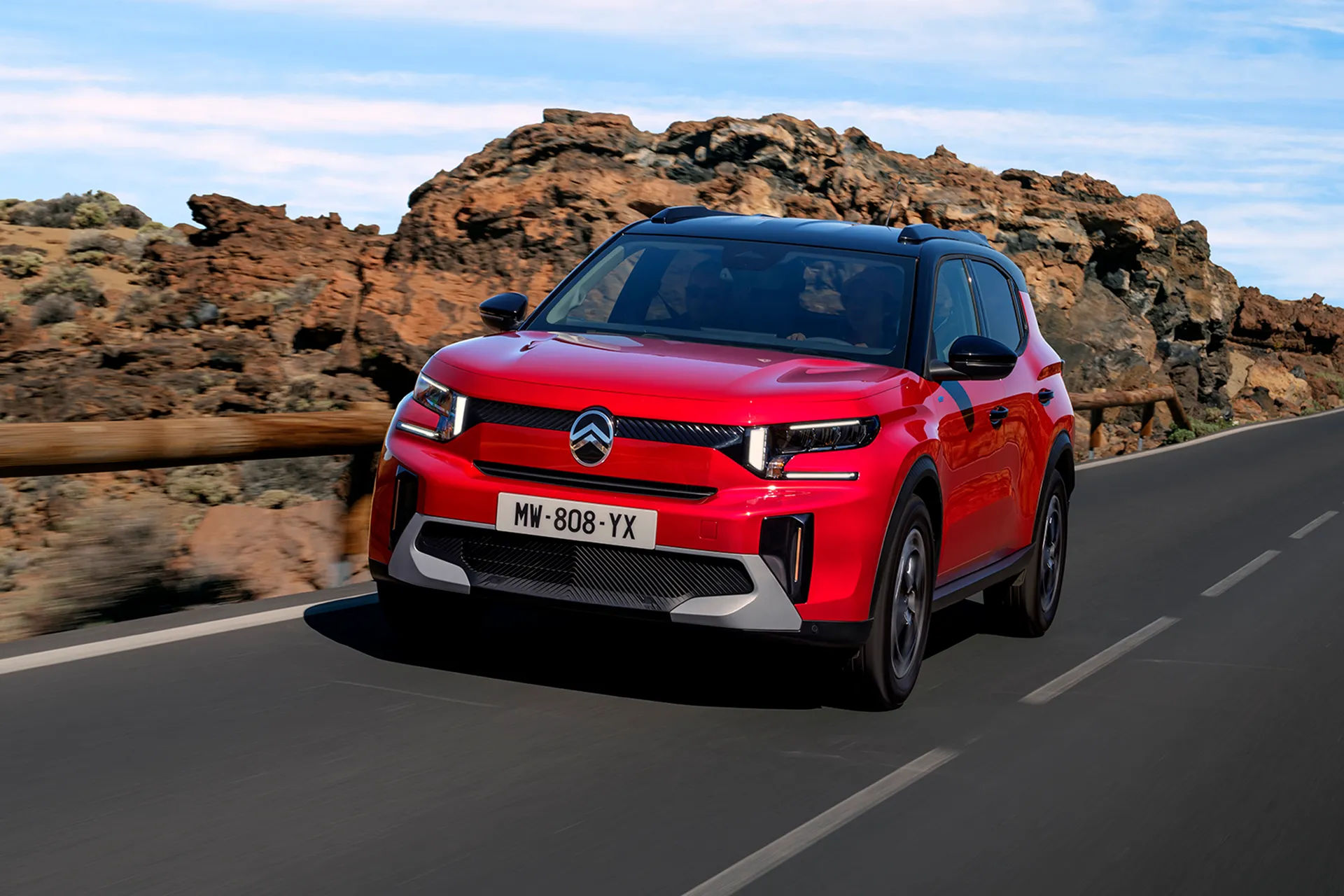
Citroen didn't do the C3 Aircross any favours in launching it alongside the updated C4, which might just be the most comfortable car of its type. The C3 Aircross is absolutely not a firm-riding car, but we were hoping for more in the way of that 'magic carpet ride' Citroen likes to talk about with the C4.
All models do come with Citroen Advanced Comfort suspension, incorporating "dual progressive hydraulic bump stops" which reduce shocks through the suspension. These certainly work, with speed bumps and imperfections in the road dispatched without driver or passenger(s) unduly wincing. It just doesn't differentiate itself from rivals quite in terms of ride quality in the way the super wafty C4 does.
You find out why when you get to some corners, where you'll discover the C3 Aircross actually handles very tidily. There's not a whole lot of body roll, and the car is surprisingly happy to be chucked around. Even the steering feels quite quick, and grip is decent, if a little worse in the EV which has to contend with more weight making the front tyres protest sooner.
We couldn't be left feeling that we might have been happy with a bit more of a rolly-polly time in the corners if that meant the C3 Aircross was more comfortable the rest of the time.
The electric powertrain of the e-C3 Aircross suits the car the best, making for a relaxing time behind the wheel and effortless, if not hugely fast progress when you accelerate. We're yet to try the 100PS petrol, but the Hybrid 136 works well in the car, even if the six-speed dual-clutch gearbox can be a little lethargic in its responses.
It's based around the 1.2-litre inline-three engine as the 100PS car, which can pass some vibrations into the car, particularly at idle. This is a common trait of triples, and the one Stellantis uses is at least a bit more refined than others, such as Renault's 1.0-litre unit. Then again, VW Group's inline-three of the same capacity is smoother than both.
What engines and gearboxes/batteries and motors are available in the Citroen C3 Aircross?
From launch, the range will be very simple, comprising two petrol options and one fully electric, but other derivatives should join eventually.
On the petrol front, there's a 100PS, 1.2-litre three-cylinder engine which is hooked up to a six-speed manual gearbox. If you want an automatic, you'll need the 136PS Hybrid 136, which combines that same 1.2-litre engine with a small electric motor and a dual-clutch gearbox.
The fully electric C3 Aircross uses a 44kWh battery and a 113PS motor. There will be a version with a larger battery pack joining later in 2025, substantially increasing the range of the car.
All-electric Citroen C3 range: How far can you travel on a charge?
The 44kWh battery currently available has a range of 188 miles, Citroen says. Official figures like these need to be taken with a pinch of salt for any EVs. Even in optimal conditions, around 150 miles of running is going to be a stretch. We couldn't actually find a way of checking the electrical consumption on our test car, so until we're able to test one over a longer period of time, it's hard to say what sort of 'real world' range you might get.
If 150 miles is not enough for you, a larger battery C3 Aircross will be joining the range later in 2025. Citroen says this one will have a range of "over 250 miles". Again, in the reality, it probably won't go as far as that - around 200 miles is a more realistic expectation.
Refinement and noise levels
Here's where the C3 Aircross starts to feel its low price. There's quite a bit of both wind and road noise at motorway speeds, becoming particularly noticeable in the electric version that doesn't have the 'benefit' of an engine to compete with external sounds. And in versions of the C3 Aircross that do have an engine, you have a not particularly smooth inline-three engine passing vibrations into the cabin.
Safety equipment: How safe is the Citroen C3 Aircross?
The C3 Aircross hasn't yet been tested by Euro NCAP, nor any other vehicles on the Smart Car platform, but we'd be surprised if the Citroen didn't come away with the full five-star rating, just as its predecessor managed.
You certainly get plenty of safety technology, along with six airbags. There's lane-keeping assist, a driver alert monitor, speed limit sign recognition and blind spot detection, plus a head-up display that'll help keep your eyes on the road.
Citroen C3 Aircross charging times: How much does it cost to charge?
"Although the rapid charging capability of the C3 Aircross isn't stellar, a small battery means it won't take long to fully charge."
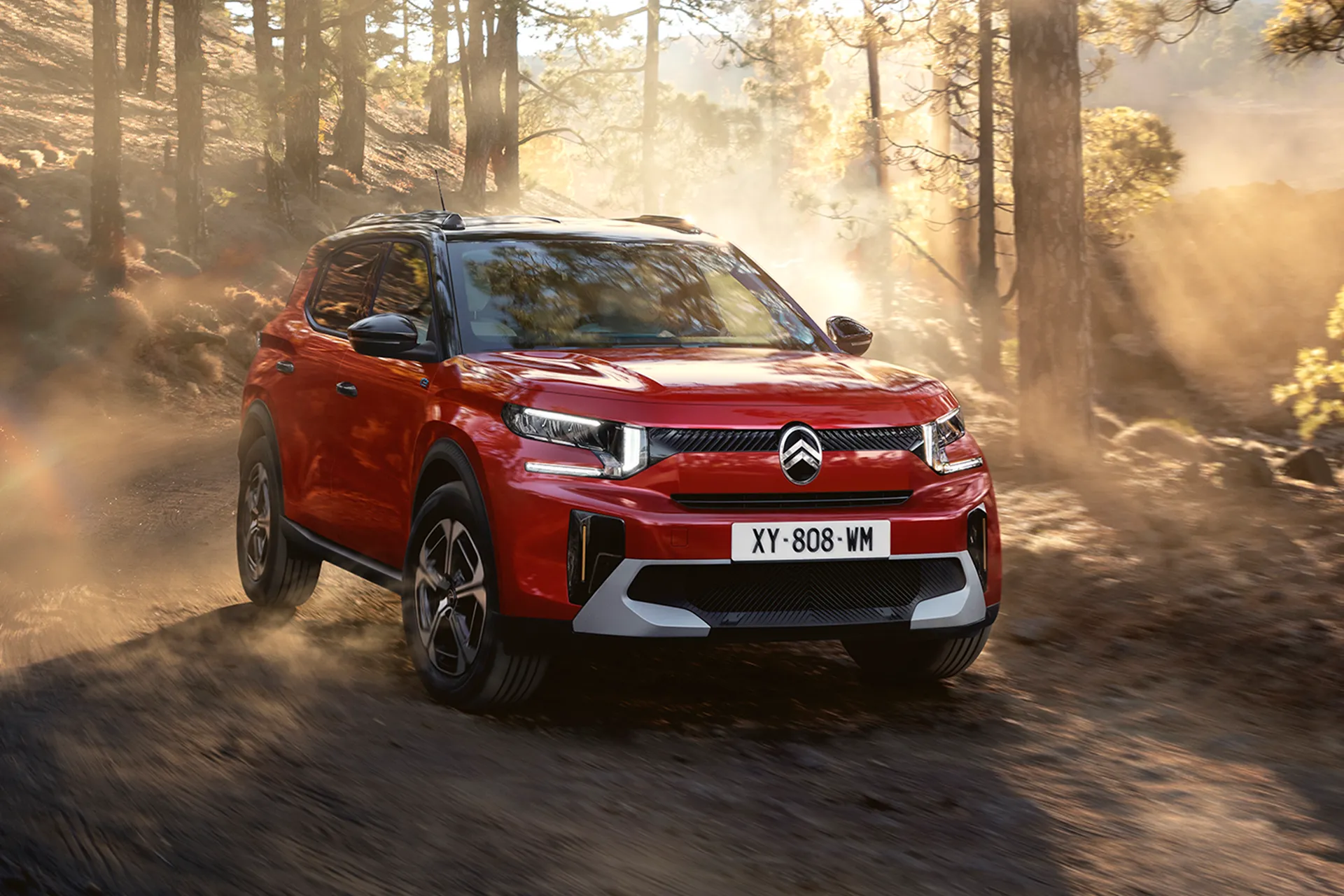
For plugging into a home wall box outputting 7.4kWh, Citroen quotes a very specific charging time of four hours and 10 minutes to take the battery from 20% to 80%, something that'd take three or four times as long if using a three-pin plug. We wouldn't recommend using the latter method frequently, and in any case, Citroen charges you extra to supply the right kind of adaptor.
The rapid charging capability of 100kW might not sound too spectacular when some premium manufacturers are quoting over 300kW, but as the all-electric C3 Aircross' battery isn't that big, it still doesn't take hugely long to charge. Plugged into a capable enough charger (remember - a lot of rapid units in the UK are still only 50kW) and in optimal conditions, you're looking at 26 minutes for a 20 to 80% charge.
Citroen also has an app called 'e-ROUTES'. This links navigation with "The vehicle's data, the traffic situation and the status of the recharging points along the selected route," Citroen says.
The 100PS petrol has an official combined fuel economy figure of 47.1mpg, while the Hybrid 136 is rated at 53.3mpg.
Citroen C3 Aircross reliability and warranty
Being such a new car and one on a brand-new platform, it's difficult to tell how reliable - or indeed not - the new Citroen C3 Aircross will be. For what it's worth, we've heard of a few different problems with the outgoing C3 Aircross, including high oil consumption and glitches with the infotainment.
Citroen does seem to be improving in the reliability stakes, but the brand hasn't covered itself in glory in the most recent HonestJohn.co.uk Satisfaction Index, where it placed fifth from the bottom of the chart of least reliable manufacturers. It wasn't the worst-placed Stellantis brand, though, with Fiat and Peugeot even lower.
VED car tax: What is the annual road tax on a Citroen C3 Aircross?
The standard flat rate of £190 will apply to both the petrol and electric-powered C3 Aircross models. While EVs have long been exempt from paying Vehicle Excise Duty (VED), they'll be liable for the same yearly fee as combustion cars from 1 April 2025.
Citroen C3 Aircross price
"We're not sure what's more impressive - that the C3 Aircross starts from about £20,000, or that the cheapest electric e-C3 Aircross isn't a great deal more."
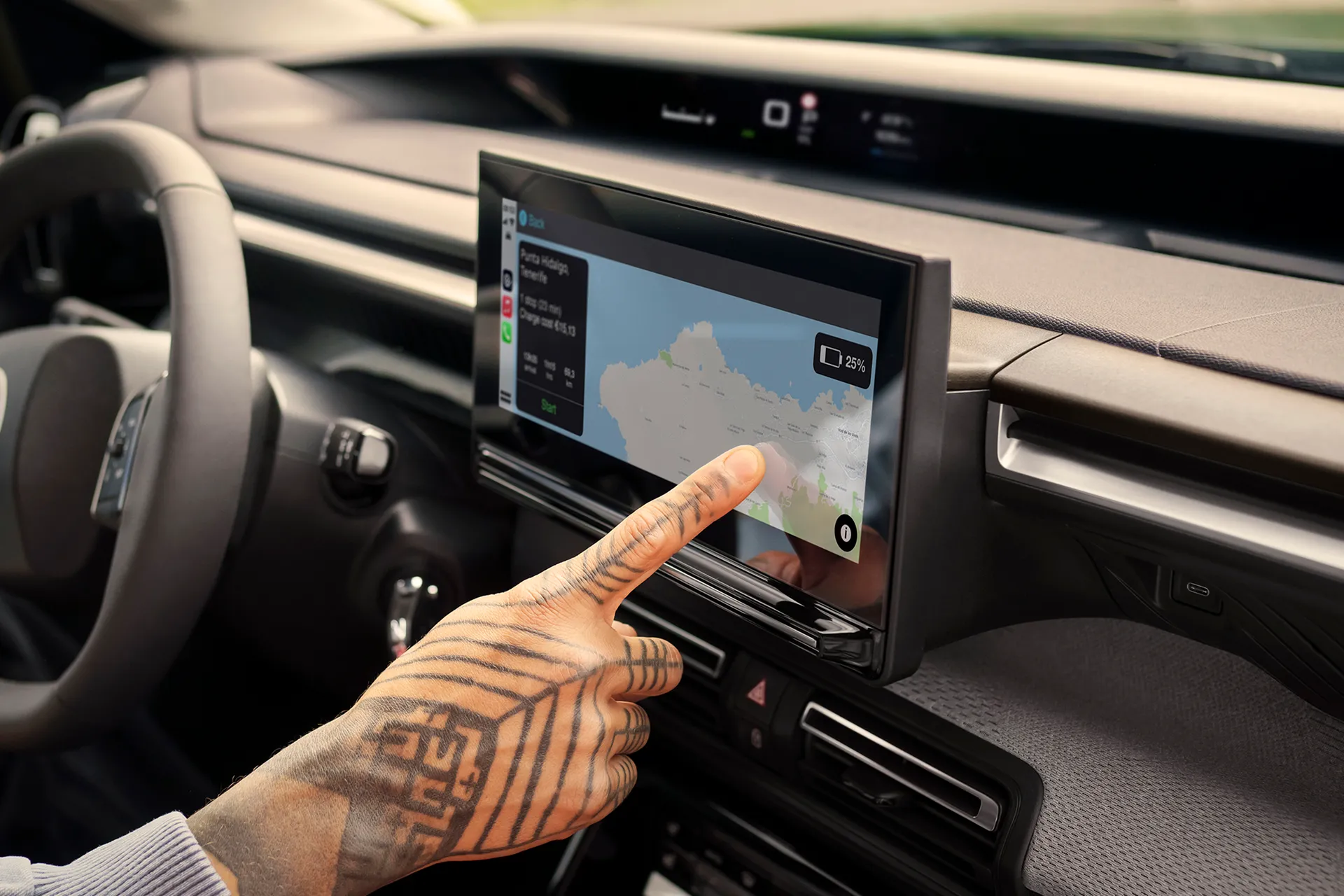
£20,240 is the starting point for the Citroen C3 Aircross, which gets you in a Plus model with the 100PS petrol engine and a manual gearbox. The Hybrid 136 Plus is £23,740, and bucking the pricier EV trend, the e-C3 Plus is actually a bit less at £22,990.
This makes the C3 Aircross notably cheaper than its closest relative, the Vauxhall Frontera, the range of which starts at £23,495 and goes up as high as £27,405. By comparison, the most expensive C3 Aircross is the Hybrid 136 Max at £25,740, while the e-C3 Max is £22,990. You do pay more for the seven-seat option, though - it's £765 in the Citroen, compared to £550 in the Vauxhall.
As such a new car, it's a little soon to start talking about used examples of the new C3 Aircross, but you also have the option of hunting out a previous-generation version, of which there are several hundred to choose from on heycar starting from just £7,000.
Trim levels and standard equipment
Choosing which C3 Aircross to go for shouldn't be too difficult a decision, as there are only two trim levels to choose from. The entry-level Plus trim comes with the 10.25-inch touchscreen infotainment system, all the safety gizmos mentioned further up this page, rear parking sensors with a camera, electric windows all round, Advanced Comfort Seats, LED headlights and 17-inch alloy wheels.
Go for the Max, and you get an extra sense of snazziness in the form of 3D LED rear light clusters, a white or black roof (this will depend on which colour you pick) to give a two-tone look, wireless phone charging, blind-spot detection icons on the mirrors, front parking sensors, an electrochomatic interior rear-view mirror (this darkens automatically to reduce glare), and best of all, a winter pack including heated seats, a heated steering wheel and a heated windscreen. Toasty.
Other than the seven-seater option, there aren't many ways to inflate the price of a C3 Aircross in the configurator. The main way you might further lighten your wallet is with colour choice, as only one hue - Monte Carlo Blue, is free. The others - Perla Nera Black, Mercury Grey, Elixir Red, Polar White and Montana Green - range from £275 to £1,020. Some of these cost more on the Plus.
Ask the heycar experts: common questions
What's the difference between a Citroen C3 and a Citroen C3 Aircross?
How much does the new Citroen C3 Aircross cost?
How much is the road tax on a Citroen C3 Aircross?
Citroen C3 Aircross cars for sale on heycar
Citroen C3 Aircross1.2 PureTech 110 Shine Plus 5dr
20226,481 milesPetrol£236 mo£14,649
Great priceBB126EHCitroen C3 Aircross1.2 PureTech 110 Shine Plus 5dr
202220,365 milesPetrol£218 mo£13,649
Good priceS91XUCitroen C3 Aircross1.2 PureTech Flair 5dr
201843,935 milesPetrol£178 mo£8,295
Great priceDeliveryCitroen C3 Aircross1.2 PureTech 110 Shine Plus 5dr
202162,701 milesPetrol£124 moor £9,000£9,400
£400 offGreat priceTS183SBCitroen C3 Aircross1.2 PureTech 130 Shine Plus 5dr EAT6
202220,715 milesPetrol£233 mo£15,449
WA89WZ
Citroen C3 Aircross Alternatives
Get our latest advice, news and offers
Keep me updated by email with the latest advice, news and offers from heycar.
By submitting you agree to our privacy policy
